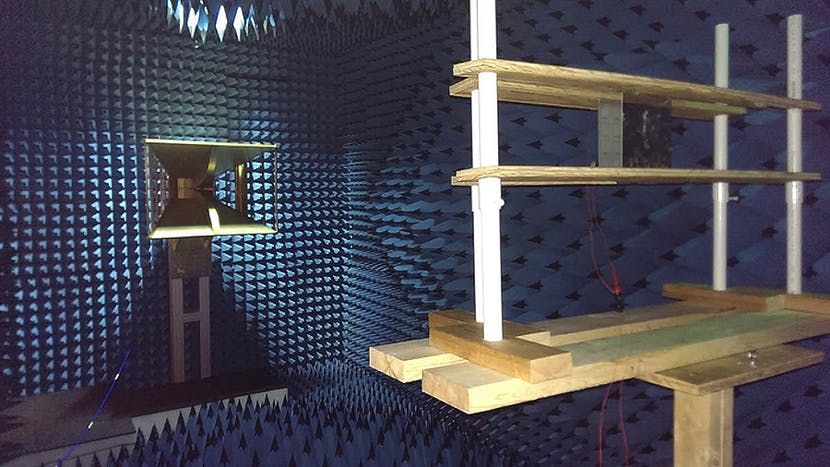
A "Metamaterial Perfect Absorber" Drives this High-Efficiency Energy Harvesting Antenna
from hackster.io
A team from the University of South Florida has developed a high-efficiency device for harvesting energy from ambient radio signals — based on a "metamaterial perfect absorber" antenna.
"By eliminating wired connections and batteries, these antennas could help reduce costs, improve reliability, and make some electrical systems more efficient," claims team lead Jiangfeng Zhou of the device the team has developed. "This would be useful for powering smart home sensors such as those used for temperature, lighting and motion or sensors used to monitor the structure of buildings or bridges, where replacing a battery might be difficult or impossible."
While harvesting power from radio waves isn't a new concept, the team's approach is claimed to offer a dramatic gain in performance — hitting, in prototype form, up to an 80 per cent efficiency, thanks to the use of a "metamaterial perfect absorber (MPA)," which offers measurably perfect absorption of electromagnetic waves coupled with a strong field enhancement effect.
"We […] placed a cell phone very close to the antenna during a phone call, and it captured enough energy to power an LED during the call," says Zhou of the team's testing, which included measurements showing the ability to harvest 100µW of power from an environment equivalent to being around 328 feet from a cellphone tower. "Although it would be more practical to harvest energy from cell phone towers, this demonstrated the power capturing abilities of the antenna.
"With the huge explosion in radio wave-based technologies, there will be a lot of waste electromagnetic emissions that could be collected. This, combined with advancements in metamaterials, has created a ripe environment for new devices and applications that could benefit from collecting this waste energy and putting it to use."
There's a big step to be taken before the prototype could be commercialized, however: miniaturization, with the current prototype being far too large to be integrated into the sorts of devices that could benefit the most from its energy-harvesting capabilities.
The team's work has been published under open-access terms in the journal Optical Materials Express.
Main article image courtesy of Jiangfeng Zhou and Clayton Fowler.




Leave a comment